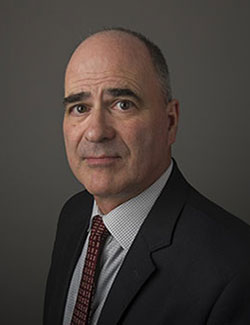
Department
School
Expertise
Brief Biography
Dr. Wiklind joined Catholic University in 2015, coming from previous positions with the European Space Agency, working at Space Telescope Science Institute in Baltimore, MD as part of the NICMOS Team. The European Southern Observatory, working at the Joint ALMA Observatory in Santiago, Chile. Before this he was Associate Professor of Astrophysics at Chalmers Technical University in Gothenburg, Sweden.
Research Interests
Dr. Wiklind has a background as a radioastronomer, working mainly at millimeter and sub-millimeter wavelengths, using molecular rotational lines as probes of the dense and cold interstellar medium in both nearby and distant galaxies. His current research, however, requires a full multi-wavelength approach, ranging from the UV through optical/near-infrared and far-infrared wavelengths. Dr. Wiklind has used the multi-wavelength approach to study the spectral energy distribution of high redshift galaxies in the HST CANDELS survey. This data is now being used to study galaxy formation and evolution. Dr. Wiklind is also using the ALMA observatory to study the molecular interstellar medium in high redshift galaxies using molecular absorption lines.
Selected Publications
A Critical Assessment of Stellar Mass Measurement Methods
Mobasher, B., Dahlen, T., Ferguson, H., Acquaviva, V., Barro, G., Finkelstein, S.L., Fontana, A., Gruetzbach, R., Johnson, S., Lu, Y., Papovich, C.J., Pforr, J., Salvato, M., Somerville, R.S., Wiklind, T., + 20 authors 2015, ApJ, 808, 101
Properties of sub-millimeter galaxies in the CANDELS GOODS-S field
Wiklind, T., Conselice, C., Dickinson, M., Ferguson, H., Grogin, N.A., Koekemoer, A., et al. 2014, ApJ, 785, 111
[CII] Line Emission in a Group of Massive Star-forming Galaxies at z = 4.7
Wagg, J., Wiklind, T., Carilli, C.L., Espada, D., Peck, A., Riechers, D., Walter, F., Wootten, A., Aravena, M., Barkats, D., Cortes, J., Hills, R., Hodge, J., Impellizeri, V., Iono, D., Leroy, A., Martin, S., Rawlings, M.G., Maiolini, R., McMahon, R., Scott, K.S., Villard, E., Vlahakis, C. 2012, ApJ, 752, L30
How do Star-Forming Galaxies Assemble their Mass at z>3?
Kyoung-Soo Lee, Ferguson, H.C., Wiklind, T., Dahlen, T., Dickinson, M.E., Giavalisco, M., Grogin, N., Papovich, C. 2012, ApJ, 752, 66
A Population of Evolved and Massive Galaxies at z≥5
Wiklind, T., Dickinson, M., Ferguson, H.C., Giavalisco, M., Mobasher, B., Panagia, N., Grogin, N. 2008, ApJ, 676, 781
